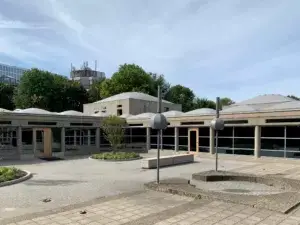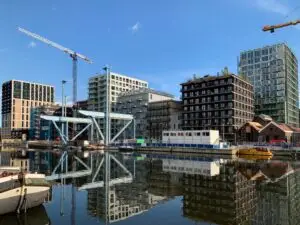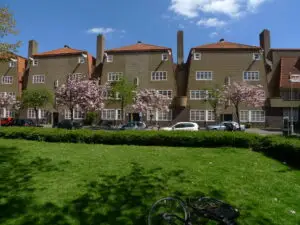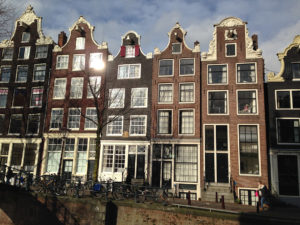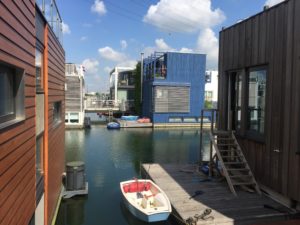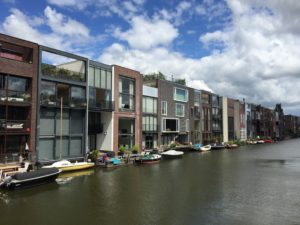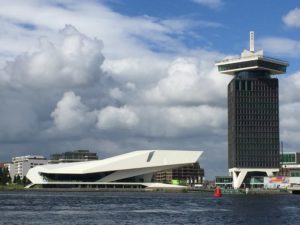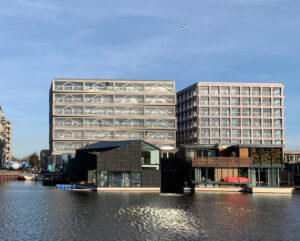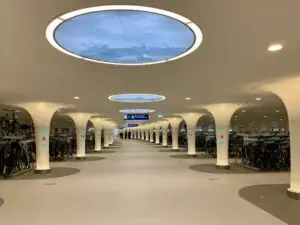Climate Resilient Amsterdam
- Amsterdam
- Duration: 3–4 hours
- Date and time to be defined
- max. 25 participants per guide
- Public transport
- Contact us for a quote
Resilience is an important topic in the Netherlands. The low-lying parts of the country, including Amsterdam, must learn to cope with rising sea levels and increasing rainfall.
The city of Amsterdam is therefore not only stimulating projects to retain rainwater and unseal public spaces, but is also promoting sustainable mobility by public transport and bicycle. This includes a large, new bicycle car park under a harbour basin at the station, as well as a metro line that creates a high-speed connection across the city to Amsterdam-Zuid. In the Frans Halsbuurt neighbourhood of De Pijp, all parking spaces have been removed from the public space and pocket parks and bicycle parking spaces have been created in their place. A few stops further on, in the Zuidas office district, you can see various projects to unseal public spaces as well as spectacular new architectural icons with a green concept.
This tour focuses on sustainable mobility, bicycle parking and rainwater retention. All projects aim to make Amsterdam a resilient city.
Tour Highlights: Climate Resilient Amsterdam
Amsterdam Centraal: new waterfront boulevard for bicycle and pedestrian
traffic, underwater garage for 7000 bicycles
Noord-Zuidlijn metro (Benthem Crouwel, 2018)
Frans Halsbuurt: Redesigning a neighbourhood without parking spaces
Metro ride to Zuidas
- Zuidas district: Explanations about the urban design and project history
- Redesign of Prinses Irenestraat with water-buffering green strip
- Office building Goede Doelen Loterij (Benthem Crouwel, 2019)
Mixed-use highrise complex Valley (MVRDV, 2022)
Spectacular high-rise complex with green façades and public route acrossthe base

